Understanding Range Hood Ventilation: Ducted vs. Non-Ducted
By Brittany Rowland
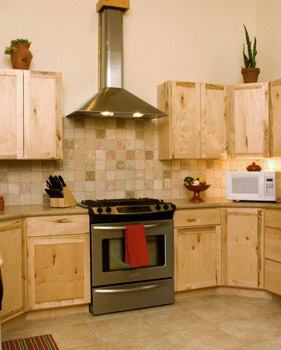
Proper ventilation is of great importance in the kitchen. Your range naturally lets off smoke, vapors, odors, and cooking particles that will linger in the air unless a range hood draws them in. You can find ducted or non-ducted range hoods in a variety of styles for a wide range of prices.
Ducted range hoods
While ducted range hoods are generally more expensive, they effectively remove airborne cooking particles to the outdoors. If you have a high-BTU gas range, then it’s imperative that the impurities are released outside through a duct.
Non-ducted range hoods
Non-ducted range hoods trap most of the smoke and steam that comes from the range, purifies the air, and recirculates it. However, you have to regularly clean or replace the charcoal filter to keep it working effectively. Recirculation filters trap the airborne particles, but they don’t remove them from the kitchen entirely, but rather recirculate them through the house.
How often do charcoal filters need to be replaced in a non-ducted range hood? Generally, you should check the filters every 3 to 6 months, or more often if you cook a great deal. Some models include an indication light that reminds you when to perform the task.
More about ventilation
The location of your cooktop has an effect on the efficiency of your duct system. A range against an exterior wall will have a short, direct duct to the outside, increasing the efficiency of the ventilation process. The farther a range is from the exterior of the house, say along an interior wall or on an island, the greater the CFM must be for your range hood to vent properly.
About that noise
You’ll find many consumers take issue with the noise level of their range hood. A fan may be highly efficient and possess multiple speeds, but they typically produce at least some noise. Range hoods measure their noise levels in a unit called sones; one sone is about as loud as the average refrigerator. It’s helpful to know whether a manufacturer measures a range hood’s sones at the maximum or normal CFM level.
The type of fan also affects the sones. A traditional rotary fan is generally noisier than a centrifugal fan, which runs smoothly and quietly with its barrel-like shape.
 |
Brittany Rowland researches new developments in Appliances, Kitchen and CE products features with a vigor to which few would aspire… but someone has to do it. See more about Brittany |
More Top 10 Lists
Top 10 Range Hoods
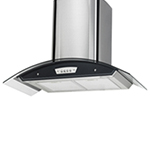
Range hoods come in a number of formats: chimney, island, professional, and built-in. No matter which style you choose, you should keep in mind certain factors that ensure quality performance: adequate air flow for the cooktop and length of duct… [more]
Top 10 Combination Ovens
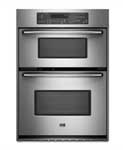
Features we considered while compiling the top 10 list for combination microwave ovens included convection baking, oven and microwave capacities, adjustable racks, attractive design, size, and, of course, cooking performance. While these units typically run expensive, there are some … [more]
Top 10 24″ and 27″ Wall Ovens
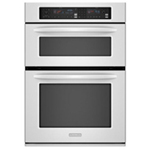
Wall ovens are becoming an increasingly popular alternative to traditional range units because of their compact size. Most wall ovens are either 24” or 27” wide, and they are powered by either gas or electric. As we examined wall ovens for our top 10 list, we considered many important factors … [more]
Top 10 Electric Ranges
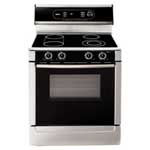
As we came up with a top 10 list of electric ranges, we considered several factors: 1. Number and size of coil/radiant elements, 2. Oven capacity and baking functions, 3. Appearance and style, 4. Ease of use and cleaning, 5. Cooking power of stovetop, 6. Convenient features like delay … [more]
Filed Under: Kitchen
